(noun) Working to restore dynamic ecosystems and human cultures together as interconnected processes
Up until around the year 2002, the project site was an old-growth western redcedar (Thuja plicata) forest, with ancient trees rising up to 70 meters over a rich understory of native herbs and shrubs. Over the coming decade, however, nearly all of the trees would be harvested for local timber.
When the Galiano Conservancy acquired the land that would become the Millard Learning Centre in 2012, all that remained of this forest was a single western redcedar, standing alone in the center of a 0.5 hectare clear-cut. This survivor was spared the axe only on the insistence of the late Ken Millard, whose vision and dedication would lay a solid foundation for this project. The tree was dubbed the ‘Grandmother Cedar’, and still presides over the now-regenerating forest. If you look closely, you can still see the distinct marks of the chainsaw on the buttress of this majestic tree.
After years of compaction from logging equipment and heavy browsing by native Columbian black-tailed deer (Odocoileus hemionus columbianus), the site was dominated by introduced grasses and thistles. Woody debris was concentrated in slash piles across the site. Invasive species such as English holly (Ilex aquifolium) and cutleaf blackberry (Rubus laciniatus) were becoming established. While a number of native understory species persisted around the large cedar stumps, there were no signs of natural forest regeneration until the project began.
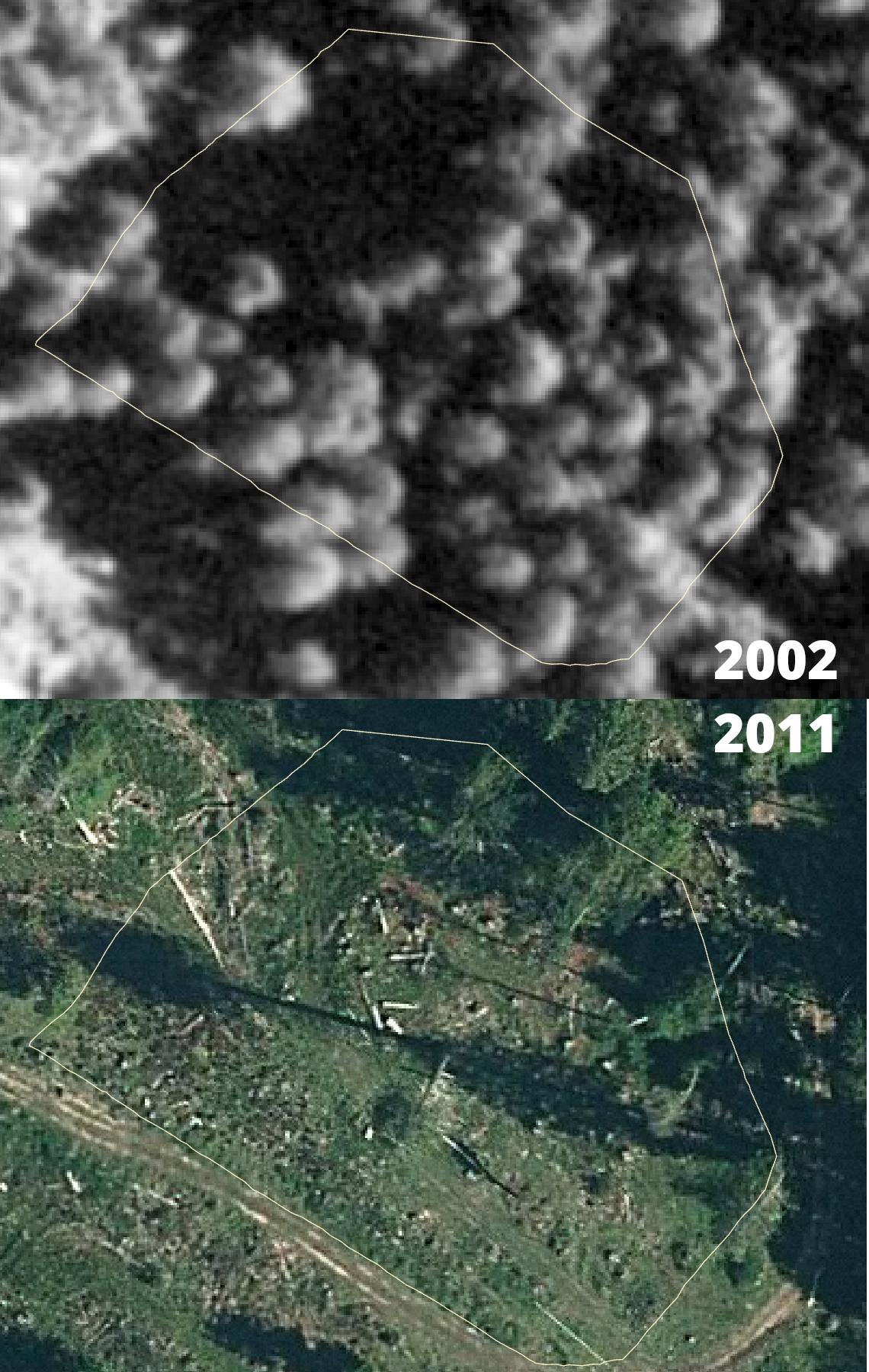
The project was built on relationships formed during the Digital Forage project, through which members of the Galiano and Penelakut Island communities came together to share knowledge about traditional foods. Starting in late 2016, GCA and AMES staff hosted a series of meetings with members of the Penelakut First Nation, including Augie Sylvester, Karen Charlie, and Richard Charlie. These meetings were carefully documented and helped inform the spirit and trajectory of the project.
Meanwhile, students from the School of Environmental Studies at the University of Victoria had been visiting the site during an annual summer restoration field school at the Millard Learning Centre, led by Dr. Eric Higgs. Successive groups of students developed and presented restoration plans for the site, each bringing new ideas to the table. In 2017, a student from the Restoration of Natural Systems program at the University of Victoria produced a final restoration prescription for the site, incorporating ideas and feedback from the community meetings and previous student reports. The full report is available here.

Restoration activities on the site began in November of 2017 with fencing and mechanical decompaction of damaged soils using Dave Polster’s “rough and loose” method. Then, in the winter of 2018, schoolchildren from Penelakut Island and Galiano Island came together with Penelakut elders, GCA and AMES staff, and community volunteers to plant over 50 edible and medicinal native species sourced from the GCA’s own native plant nursery on the site.

Planting was accompanied by a cedar weaving workshop, led by Karen and Richard Charlie. Then, during the 6th annual Musical Walkalong For Learning, the first in a series of art works in dialogue was unveiled at the entrance to the Forage Forest. The twin heron sentinels are now just one of several collaborative pieces by Penelakut artists Richie Smith, Richard Charlie and Galiano artist Kenna Fair that live in the Forage Forest.
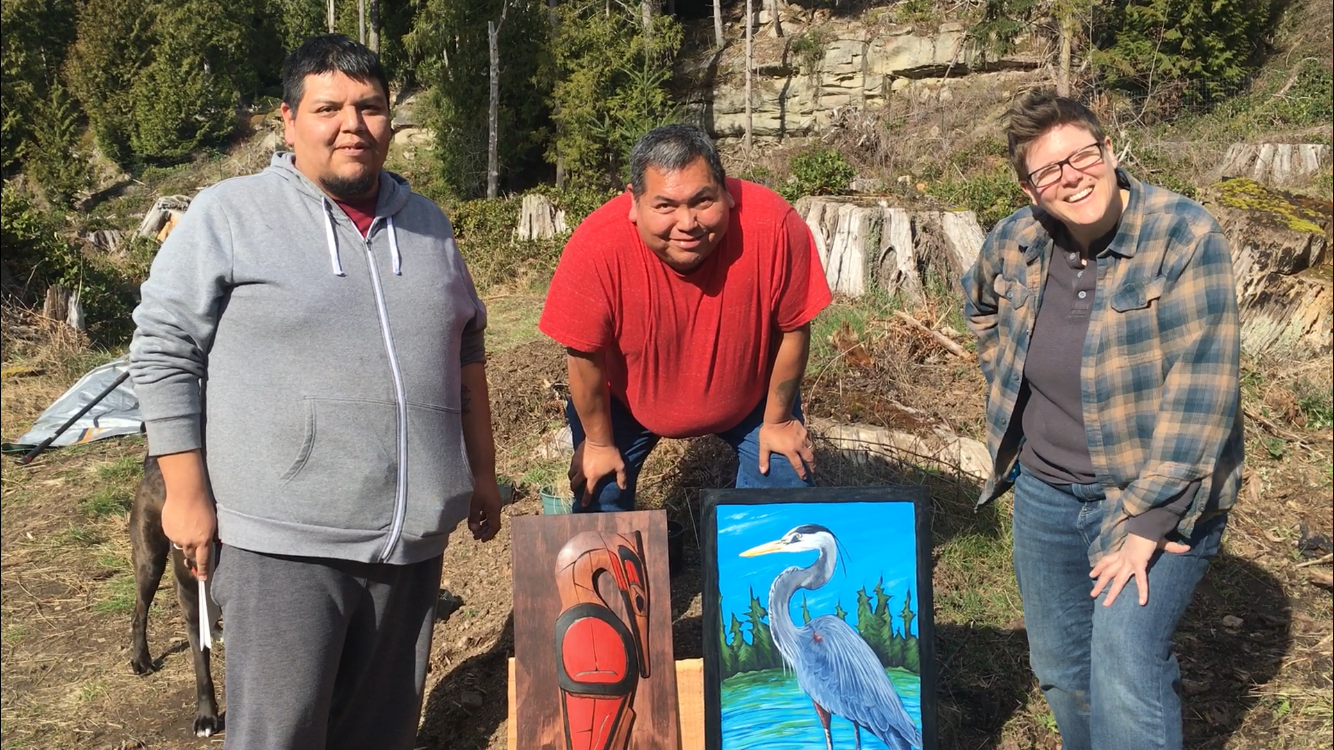
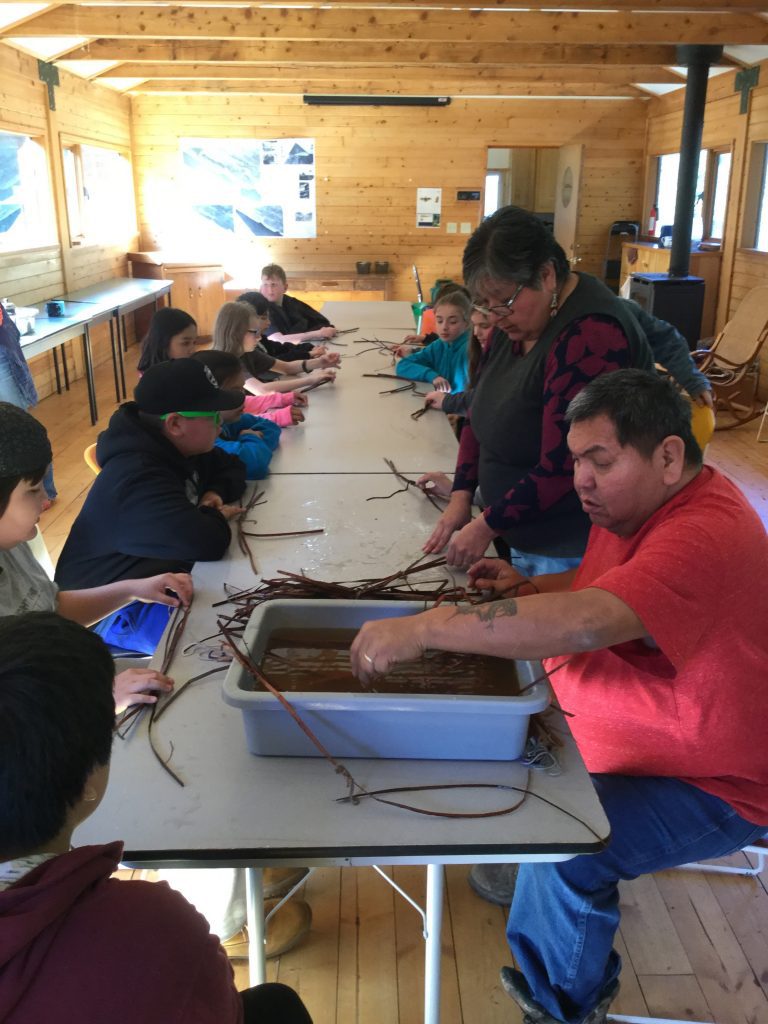
The first harvests from the Forage Forest took place in fall and winter of 2018 and 2019. In September of 2018, t’eqe’ (salal) berries were harvested and preserved for use in community events.
In May of 2019, yaala’ (cow parsnip) shoots, nodding onion greens and bulbs, q’uxmin (biscuitroot) greens, and se’uq (bracken fern) fiddleheads were harvested, prepared, and served to a group of 70 leaders from across the Salish Sea at the Millard Learning Centre.
July of 2019 saw the first groups participate in our new Native Plant Investigations program, which involves smelling, tasting, and harvesting native plants for tea blending.
Today, plants are harvested seasonally to produce our Forest Garden Tea brand, which can be purchased at the Millard Learning Centre and at the Loose Leaf Tea and Papery in Sturdies Bay.
The results have been delicious, and future harvests of an increasing quantity and diversity are anticipated as the Forage Forest continues to grow.


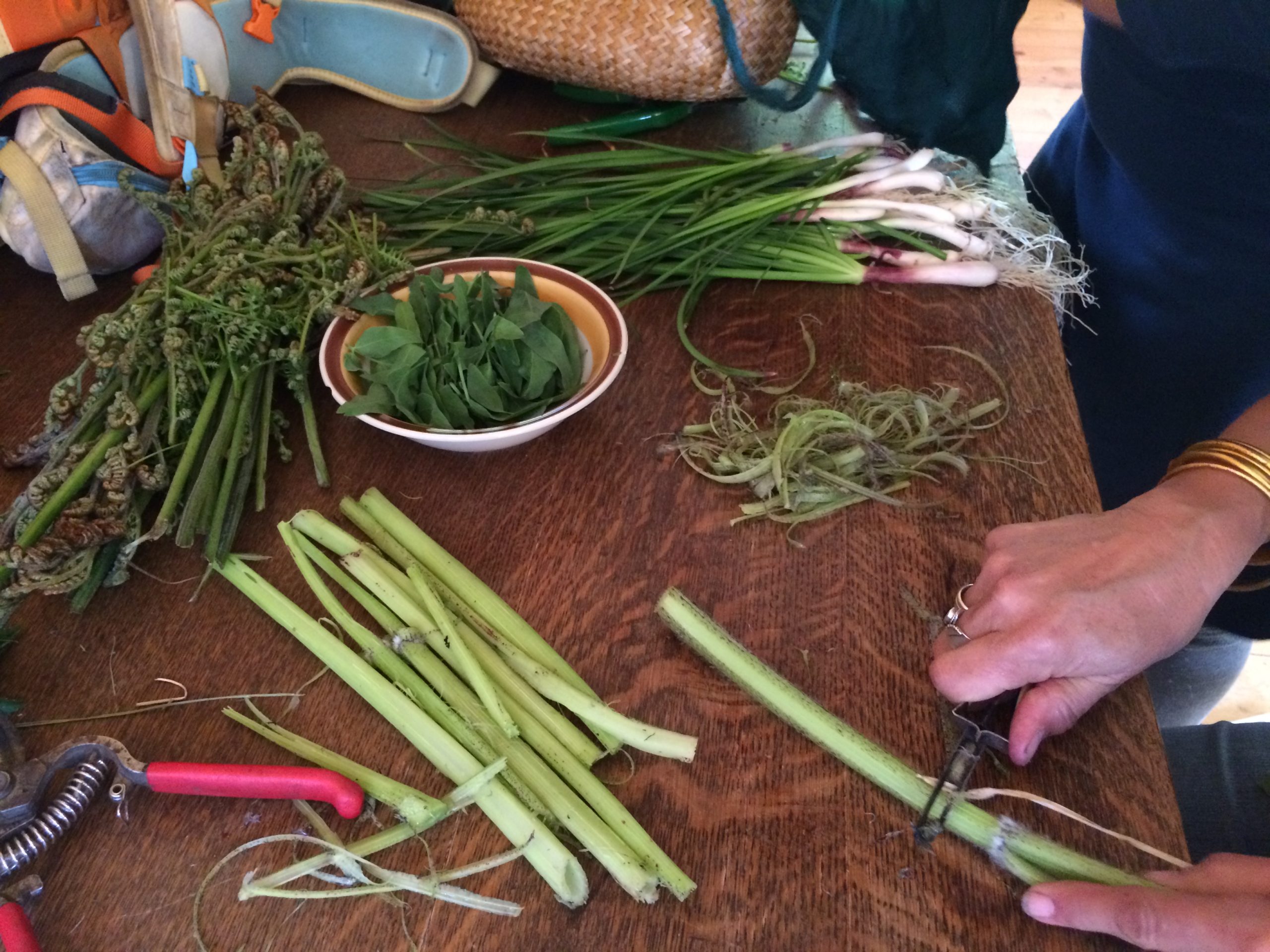
Ongoing care and monitoring are essential parts of any restoration project, and the Forage Forest is no exception. But how to account for the health and impacts of such a unique project, with ecological, social, and artistic dimensions? In anticipation of this dilemma, University of Victoria post-graduate student Hyeone Park devoted her studies to developing a monitoring framework that could accommodate the unique features this project. Her masters thesis – entitled “A model of food forestry and its monitoring framework in the context of ecological restoration” – guides our monitoring work moving forward, and resulted in a published article in the journal Environmental Monitoring and Assessment.
Students and interns take part in executing the monitoring framework and collecting data on an annual basis. Our hope is to capture a snapshot of the broad range of ecological and social values created through innovative projects like the Nuts’a’maat Forage Forest.
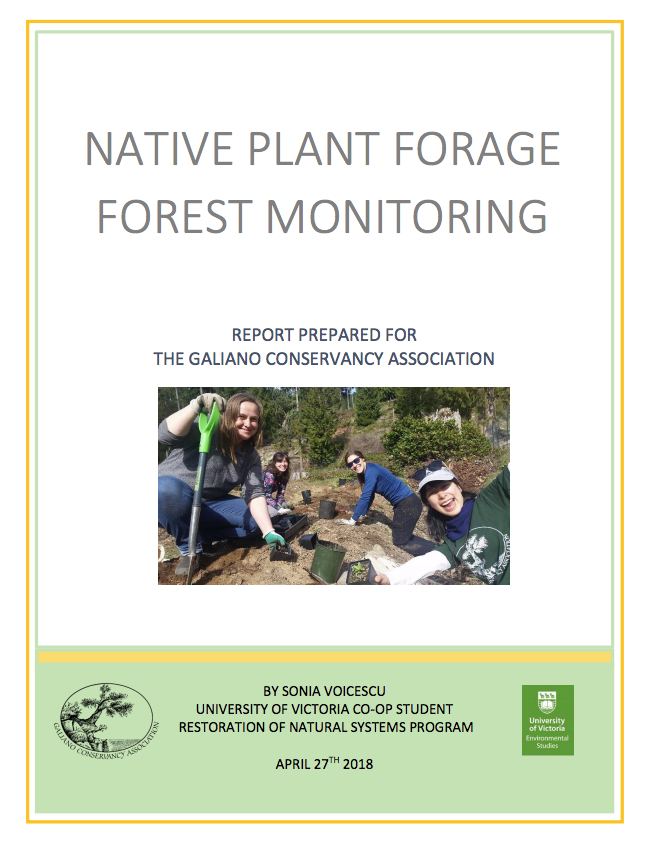
The Nuts’a’maat Forage Forest continues to grow and evolve. Every year, some of the plantings reach maturity and begin to produce fruit. New species show up and start to grow on their own. Native tree species grow a little higher and begin to cast some protective shade.
Come visit the Forage Forest, walk the trails, check out the newly installed artwork from Richard Charlie and Kenna Fair, and sample some of the seasonal foods. Consider volunteering with our Restoration Team, or taking some edible native plants home from our nursery to establish in your garden. We can work together to make these tasty and useful species a bigger part of our lives, and restore their presence across the island.
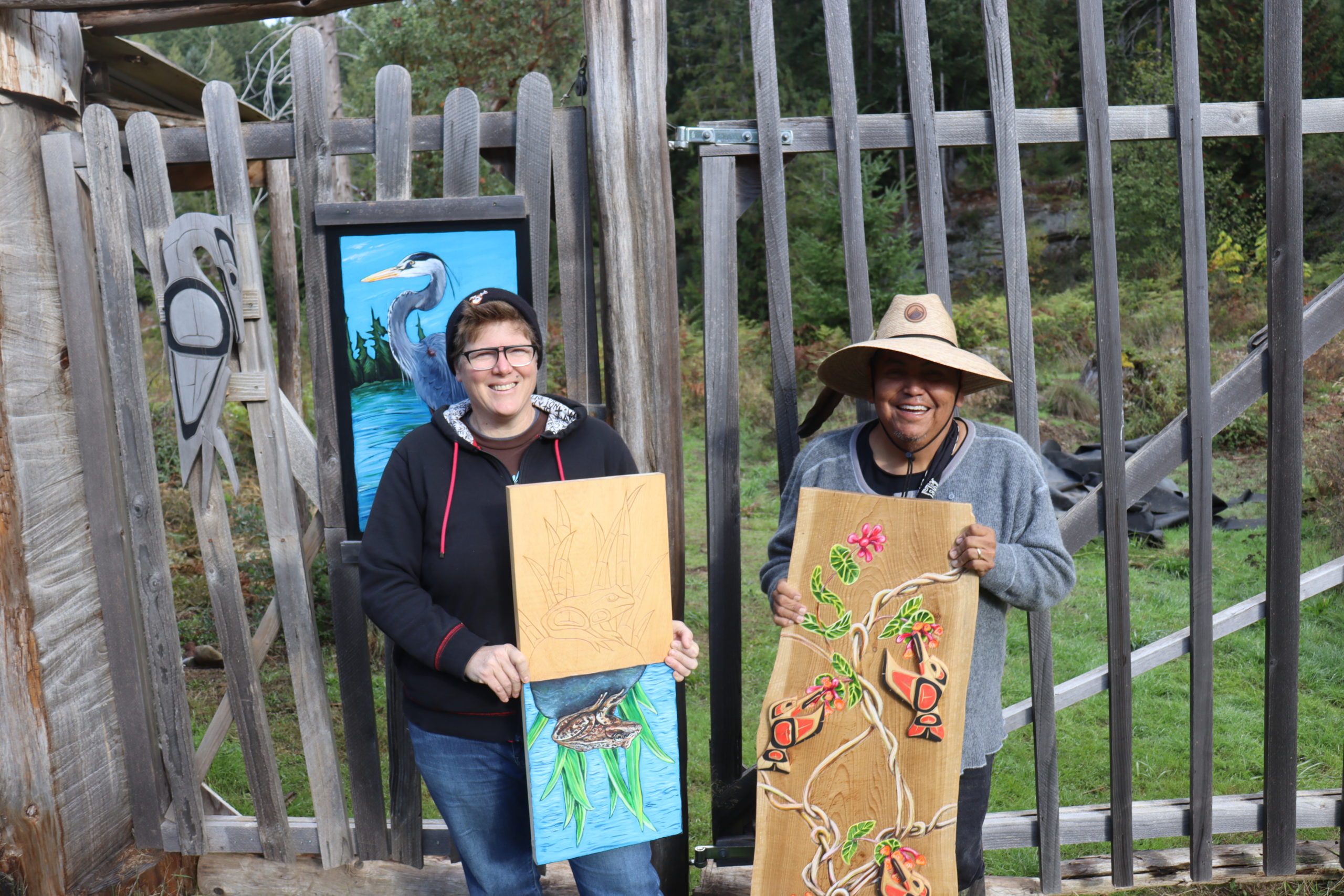
Notifications